The guys in my Wednesday gaming group started a push to play more of the old, dust-covered games at the bottom and backs of our respective game closet shelves. The premise was simple: let’s try to remember why we keep all these old games when all we ever play now are the newest, shiniest things in shrink.
Right on the spot, the Dusty Euro Series was born, and I’ve enlisted multiple game groups to help me lead the charge on covering older games.
In order to share some of these experiences, I’ll be writing a piece from time to time about a game that is at least 10 years old that we haven’t already reviewed here at Meeple Mountain. In that way, these articles are not reviews. These pieces will not include a detailed rules explanation or a broad introduction to each game. All you get is what you need: my brief thoughts on what I think about each game right now, based on one or two fresh plays.
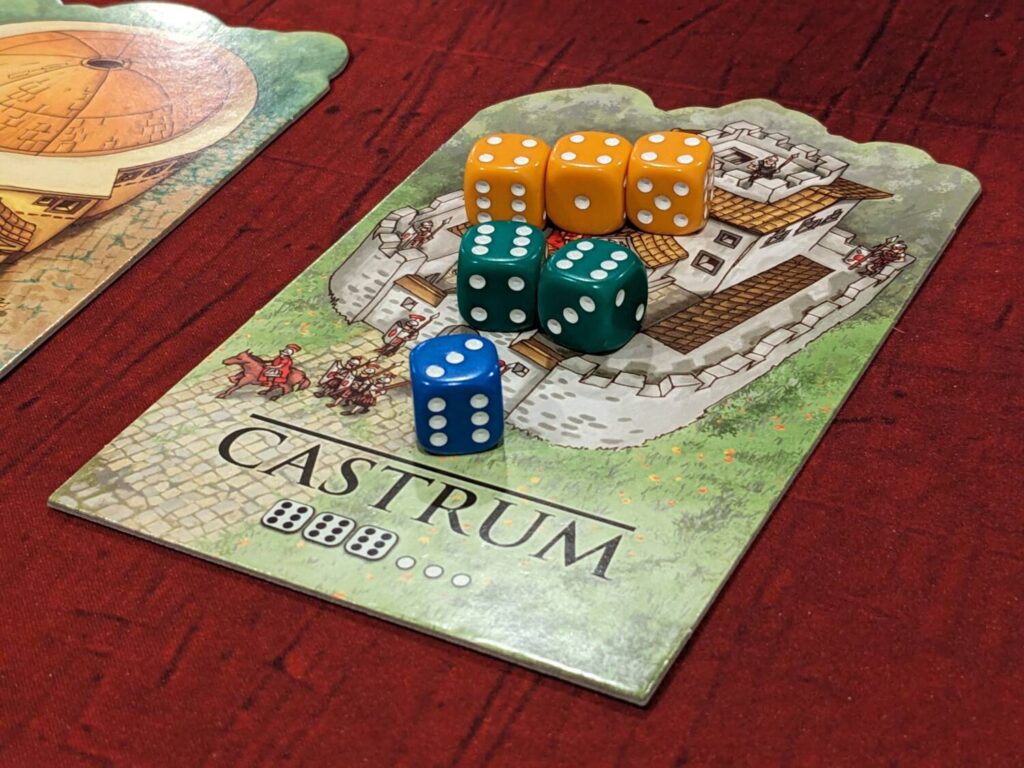
Alea Iacta Est: What Is It?
Alea Iacta Est (Latin for “The Die is Cast”) was published in 2009 and is a member of alea’s “Medium Box” series, a fantastic series of Euro-style strategy games that were all published using boxes of the same size. Some of the other games in that series include standouts such as the first Glen More (2010), Las Vegas (2012), and the second edition of San Juan (2014).
Alea Iacta Est uses a pool of eight dice per player. Across six rounds, players compete to score the most victory points, here known as prestige. The dice are used to grab majorities in three or four different scoring areas, based on player count, with a theme loosely based on the idea that Caesar and his followers are tasked with gathering patricians or conquering neighboring provinces. (Or something. Let’s just say that Alea Iacta Est doesn’t really bother trying to integrate its theme into the gameplay!)
For every action (even within the same round), players chuck their dice, then use those results (in turn order) to influence one of the available buildings with any number of their dice. Players do this to have the best dice combos by the time any single player has assigned all the dice in their personal pool to the buildings. One building gives end-game scoring tiles to the player who plays the longest and highest-”pipped” run on that tile (think Yahtzee!-style straights, such as a 1-2-3). Another grants a player who plays the lowest single die first choice of patricians that must match province tiles earned on a separate building.
Because each player has to reroll all of their personal dice remaining in their pool, Alea Iacta Est creates a nice tension every turn. A building that might require a set of four sixes to win a province tile is worth snagging now if you have the right dice rolled within the current turn, because who knows what you’ll roll the next time around! This makes Alea Iacta Est a much more tactical Euro than some of the other games I’ve tried recently, but that also brings down the turn time since players have to read and react to each turn in a unique way.
Some buildings only have two prizes, while others have more, so there’s a chance that a player could be squeezed out of scoring anything of value on a turn.
After six rounds, the player with the most prestige is the winner!
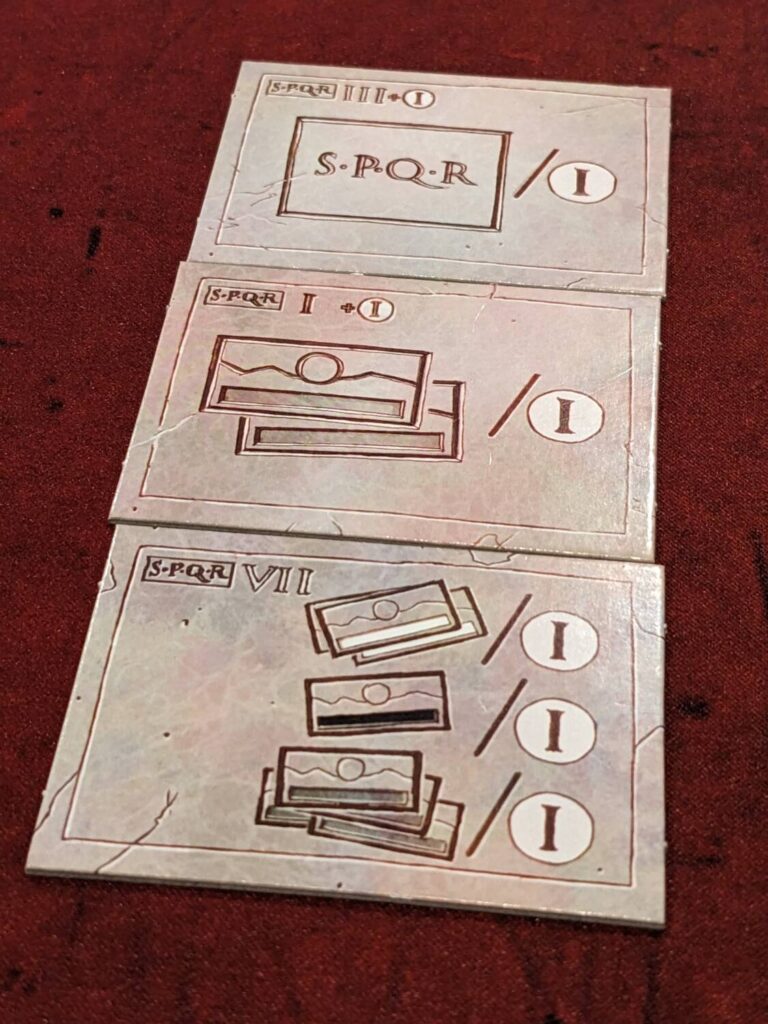
Provincial
Yes, Alea Iacta Est does have a terrible title. Luckily, the fantastic amount of interesting decisions make up for that, in a game that appeared at first blush to be a straightforward dice chucker. I loved the turns where a player placed three or four dice on an initial turn, leaving them with less dice for future turns but with an increased chance that they would be able to use all of their remaining dice in just an action or two.
And a handy player aid (that I think was provided by my friends John and Beth, and not by the original publishers) made sorting the various scoring tiles a snap, so play was very breezy in our three-player game. Bumping players out of scoring/prize spots was always funny and there’s a space that looks a heck of a lot like a latrine used to compensate players with reroll tokens if they earn nothing in the patrician area of the die tracks.
In a three-player game, one building is not in play, so I think I would prefer Alea Iacta Est at four players instead of three if I were to play it again. Alea Iacta Est is no longer in print, so finding a copy is going to require a lot of creativity…this is the kind of game you might find at an old German game store or in a fire sale on Facebook Marketplace from a player who is paring down their 500+ game collection. In those cases, I think Alea Iacta Est is a steal as a family-weight, light strategy Euro that one can definitely knock out in 30-40 minutes.
They don’t make ‘em like they used to, right? If you can find a copy of Alea Iacta Est, give this a look!


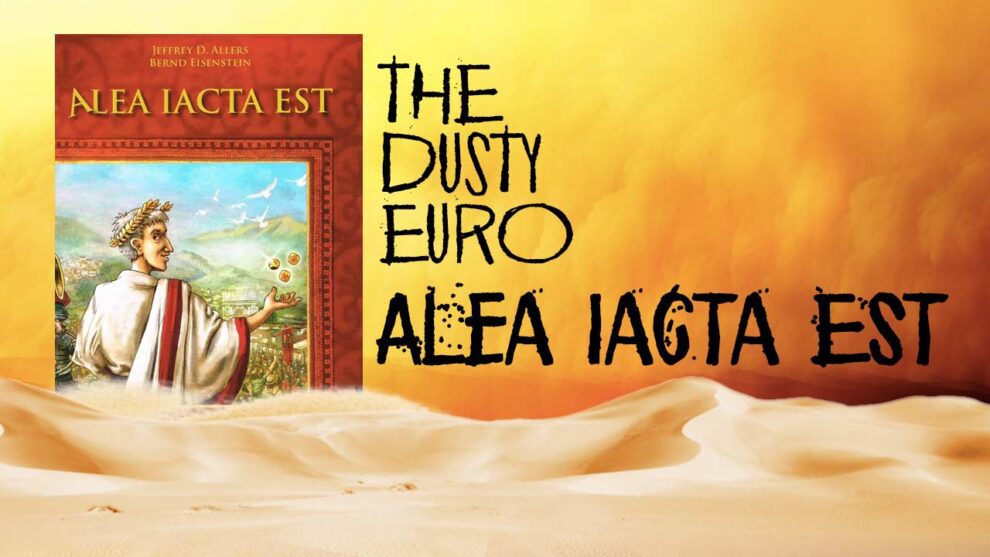

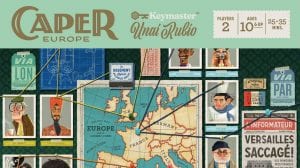
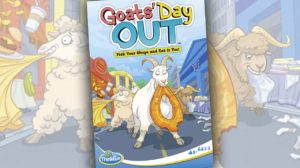





Alea iacta est was re-imagined and re-published as Order of the Gilded Compass.
https://boardgamegeek.com/boardgame/200924/order-of-the-gilded-compass
I recommend either of them.